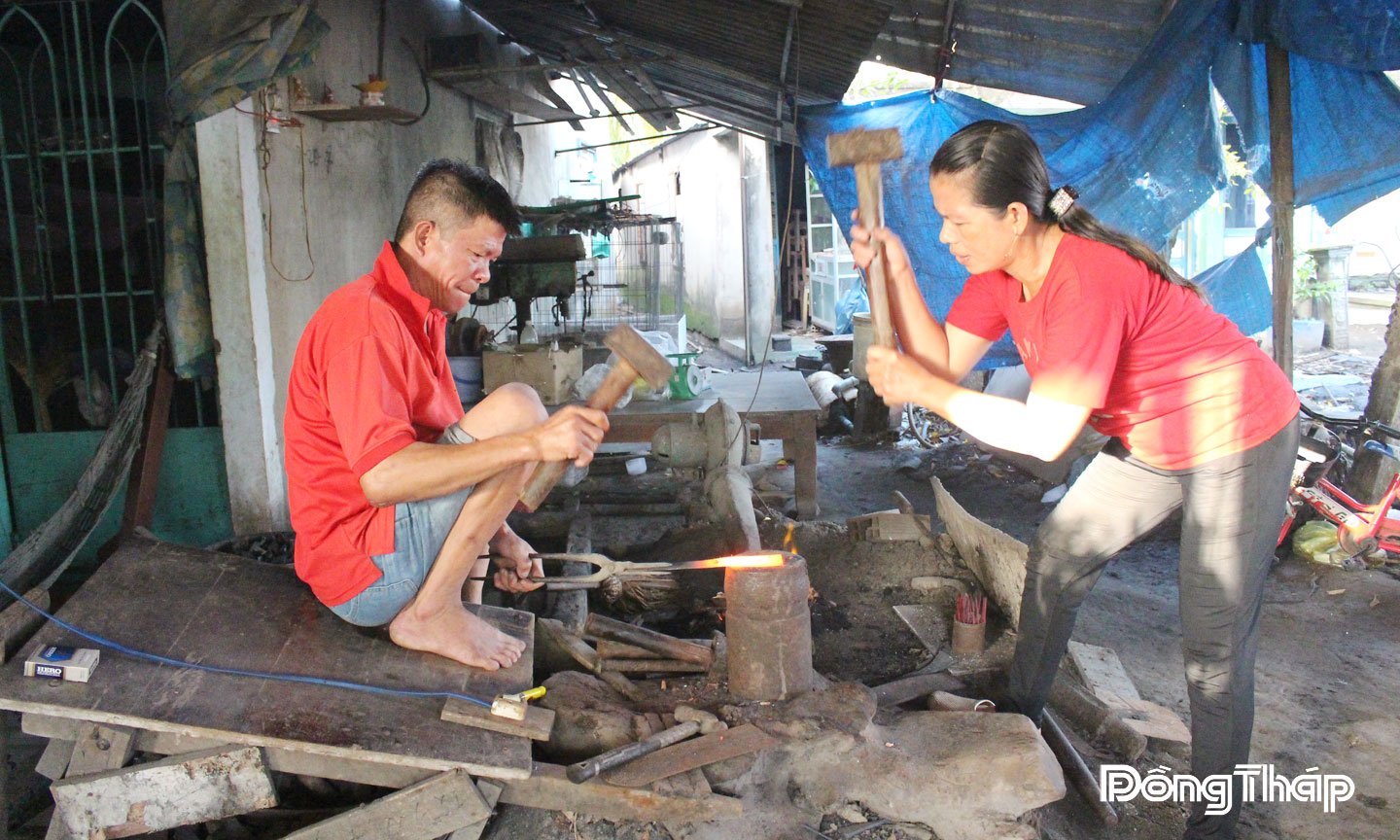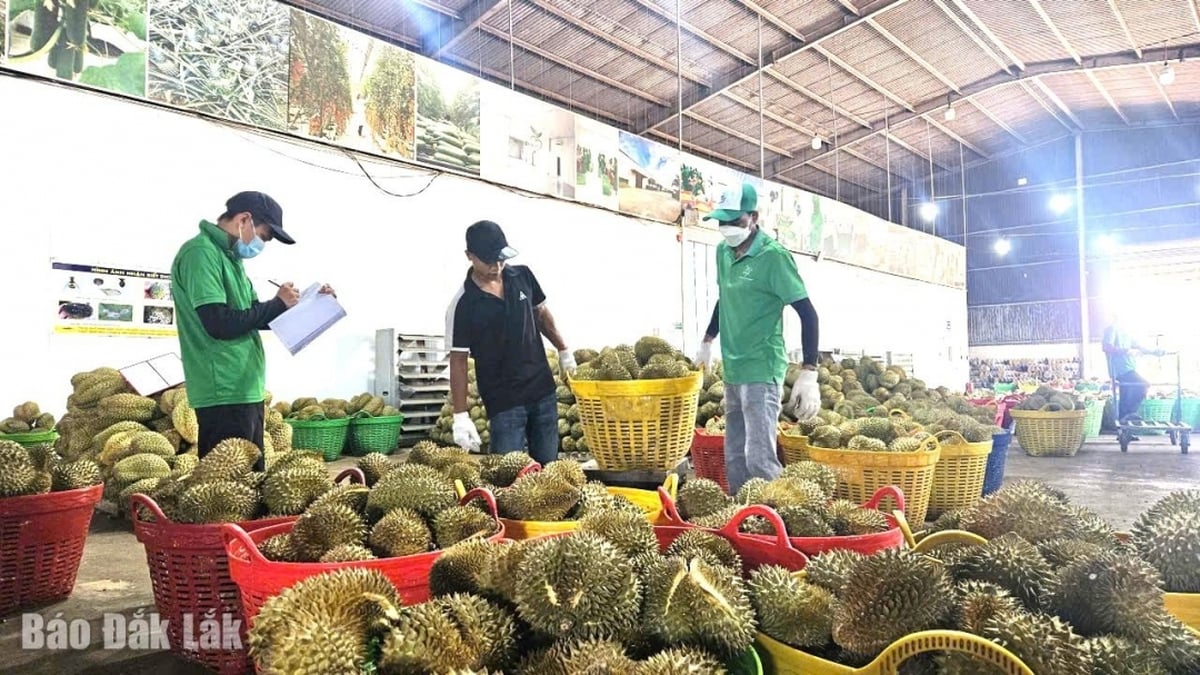FORGE IS GETTING DECENT
The first years after the liberation and reunification of the country were the most popular period for blacksmithing. When the war ended, people focused on production, developing family economy and building their homeland, leading to an increase in demand for forged products. Master, Historical Researcher Le Thanh Thuan, Dong Thap Province Historical Science Association, shared: “In the past, blacksmithing played an important role in life, because it made agricultural tools and utensils, such as: knives, planks, scythes...”.
 |
| The traditional blacksmithing profession is gradually fading away due to lack of successors. |
However, with the advancement of science and technology, the craft of manual forging has gradually faded away due to the appearance of modern machinery and mass-produced metal products with high commercial value. However, in some places, households still maintain the forging profession in a "father-to-son" manner, mainly producing products for family use or simple labor tools.
| Master, Historical Researcher Le Thanh Thuan, Dong Thap Province Historical Science Association, said: “A reality of the traditional blacksmithing profession today is that “mechanization” is gradually dominating the production of metal agricultural and fishing tools to serve production. That leads to the gradual decline of this profession, and successors no longer follow the profession.” |
We had the opportunity to visit Phu Huu commune (Dong Thap province) and heard the elders recount that in the past, Cai Tau Ha blacksmith village was famous for its bustling traditional blacksmithing. When coming here, everyone could clearly hear the sizzling sound of red-hot iron bars dipped in cold water, or the rhythmic sound of anvils and hammers, mixed with the laughter of the workers. Now, in Cai Tau Ha, the familiar sounds of the past are no longer the same, with only a few households "keeping the fire" of forging.
Mr. Vo Van Thanh (76 years old, Phu Huu commune), one of the “seniors” of the blacksmith village, who followed his father’s career at the age of 16, said: “I studied until grade 6 and then dropped out of school to follow my father in the blacksmithing profession and by the age of 16, I had mastered the profession. Before, my family made several thousand rice-cutting scythes every month.” But since the appearance of the rice-cutting machine, the need for scythes has disappeared, and the family’s blacksmith workshop is no longer as prosperous as before.
Chatting animatedly about the once-famous blacksmithing profession, Mr. Thanh’s voice suddenly dropped with regret: “My family has been following the blacksmithing profession since my grandfather passed it down to my father. My family has 8 siblings, of which 6 are sons following the blacksmithing profession passed down from their father. In the past, this blacksmith village in Cai Tau Ha had about 100 blacksmiths. Over time, due to increasingly modern life, now there are only a few blacksmith owners who stick with the profession.”
Persistently "KEEPING THE FIRE"
At 6 a.m., Le Van Sat (46 years old, My An Hung commune) started to light the fire in the forge. The coal fire, fueled by the wind from the bellows, soon burned brightly. The iron bars buried deep in the red coals also turned red and soft after a while.
 |
| Mr. Le Van Sat and his wife (My An Hung commune) use hammers to continuously hit the iron bar to shape the forged product. |
Mr. Sat and his wife used hammers to continuously strike. The hammer hit the red steel, sending sparks flying, gradually shaping the forged product. Under the dull, smooth sound of each hammer blow, the iron ingot gradually transformed into a knife. Mr. Sat has been blacksmithing with his family since he was over 10 years old, confiding: “Blacksmithing is very hard! But it has become a profession to make a living, so my wife and I continue to stick with it.”
Having been involved in the blacksmithing profession passed down from his father for decades, Mr. Nguyen Van Rong (66 years old, Cao Lanh ward) is still diligent and passionate about "keeping the fire" of forging. Every day, he is always diligent and dedicated to making pieces of steel into tools for use in the family or for farming.
Lifting his shirt to wipe the sweat off his face, Mr. Rong confided: “A blacksmith must use a main hammer weighing 5 kg and a secondary hammer weighing 3 kg to hit the hot iron bars, shaping the product. The two blacksmiths must continuously hit the hammers, and each hammer blow must be rhythmic, regular, and precise. The blacksmith profession requires diligence and patience to have a satisfactory product.”
PAIN BECAUSE OF LACK OF SUCCESSORS
Blacksmithing is a hard job, requiring exposure to coal smoke, sitting next to a blazing stove with the sound of anvils and hammers ringing in the ears, so not everyone wants to stick with it, especially young people. The remaining blacksmiths are still loyal to producing household tools and agricultural tools, and have to work very hard to make a living from their profession.
 |
| Blacksmith Nguyen Van Hien, residing in Cao Lanh ward, is sharpening a knife. |
The blacksmith must be resilient in a harsh environment with the heat of the steel billet heated to thousands of degrees and the always red-hot coal furnace from the bellows. The blacksmith must be both patient and skillful.
To create a product, from a piece of steel billet, it must go through many stages, such as: heating it red hot, putting it on an anvil to beat it... to gradually form the shape of the product, then grinding, tempering, becoming a complete product.
Mr. Nguyen Van Hien (61 years old, Cao Lanh ward), who has been in the blacksmithing profession for 43 years, said: “Before completing a product, it must go through the grinding and polishing stages to beautify the product. All stages are done by hand. The talent of a blacksmith is to temper it to the right level, not too old or too young. Nowadays, no young people want to follow the hard blacksmithing profession because the working environment is hot, smoky, and dusty.”
Near the Dat Set market area in My An Hung commune (Dong Thap province), there are still 3 blacksmiths. In the small blacksmith house, Mr. Le Van Lam (80 years old, My An Hung commune) is one of the seniors who still sticks to the profession. Since childhood, Mr. Lam has been familiar with the sound of anvils and hammers of the blacksmith profession from his grandfather, then his father. Throughout his childhood, Mr. Lam witnessed the hardships and difficulties of his family in the blacksmith profession.
“The blood of the profession” has been deeply ingrained in his mind until now, he is still passionate and cannot give up the profession despite his old age. Mr. Lam has devoted almost his entire life to following his father’s footsteps; because he considers blacksmithing both a profession and a career. For Mr. Lam, the fire of the profession, the love for blacksmithing is always smoldering inside him. “My father taught that those who follow the blacksmithing profession, in addition to good health and skillful, agile hands, need sharp eyes, good ears, patience in the profession, and must love and appreciate the profession,” Mr. Lam shared.
Today, many blacksmiths are still passionate about and love this craft and regret that the “father-to-son” profession is gradually fading away with the passage of time. At some point, the sound of the anvil and hammer will stop, and the blacksmithing profession will fade away and future generations will no longer know about it. The predecessors who followed the blacksmithing profession are always worried about the lack of people to pass on the knowledge.
Many blacksmiths worry that the traditional forging will eventually cease to exist, and will only remain a memory of the past. Ms. Nguyen Dang Huong (Hai 555 Forge in Thap Muoi Commune) worries: “I have been in the blacksmithing profession since I was 20 years old, but now my family has no one to take over the profession.”
DUONG UT
Source: https://baoapbac.vn/xa-hoi/202508/giu-lua-nhip-ren-1047809/

























![[Photo] Nghe An: Provincial Road 543D seriously eroded due to floods](https://vphoto.vietnam.vn/thumb/1200x675/vietnam/resource/IMAGE/2025/8/5/5759d3837c26428799f6d929fa274493)


![[Photo] Discover the "wonder" under the sea of Gia Lai](https://vphoto.vietnam.vn/thumb/1200x675/vietnam/resource/IMAGE/2025/8/6/befd4a58bb1245419e86ebe353525f97)





































































Comment (0)